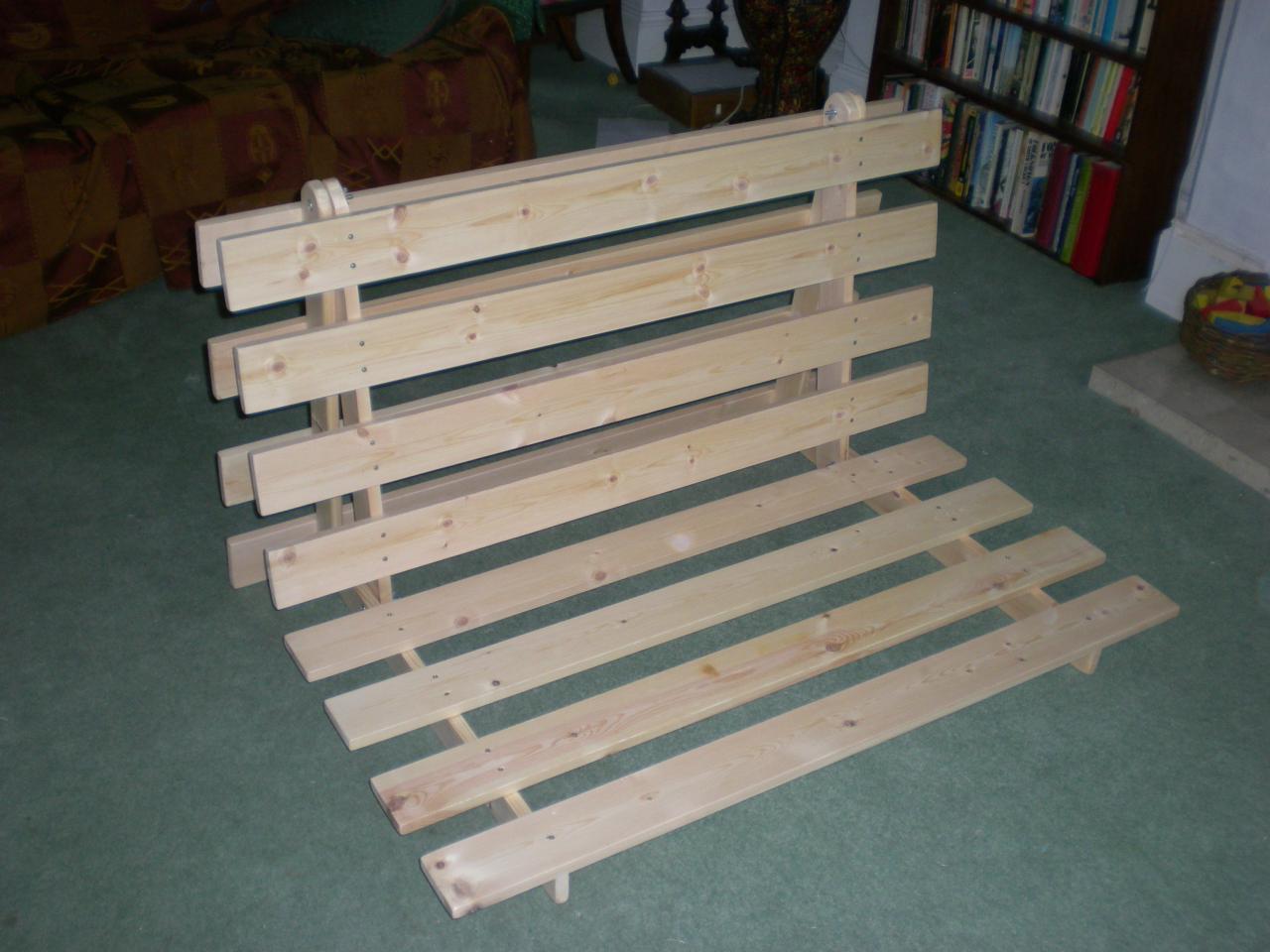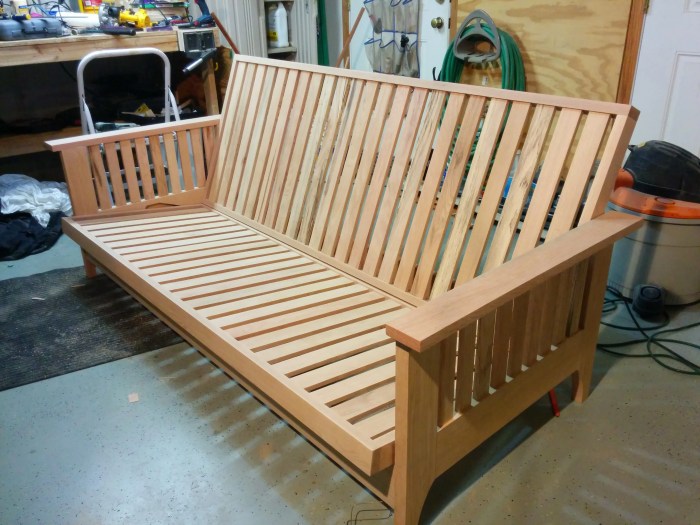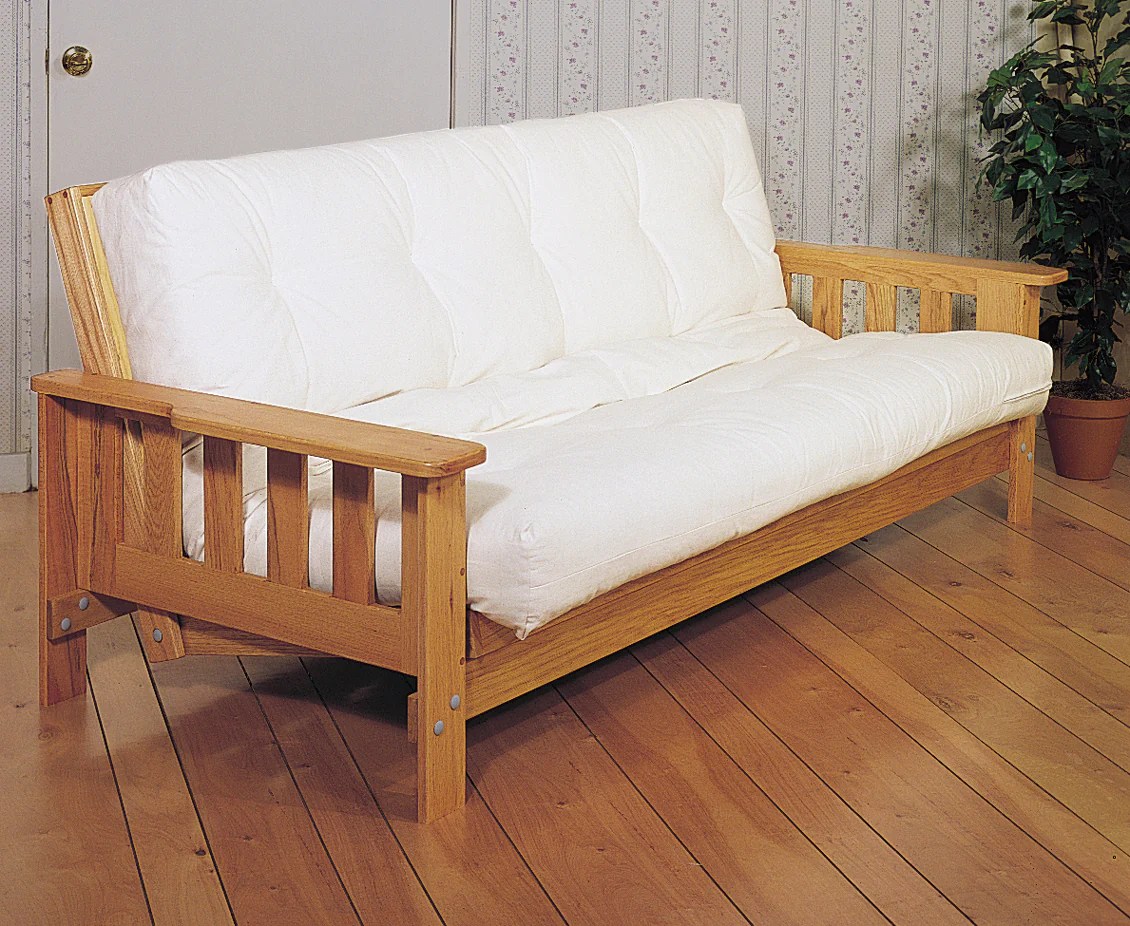DIY futon takes center stage, inviting you to craft a comfortable sleep haven tailored to your needs and style. This project offers a unique opportunity to create a personalized piece of furniture that reflects your individual taste while potentially saving you money. From selecting the right materials to assembling the frame and crafting a custom mattress, building a DIY futon is a rewarding experience that combines practicality with creativity.
This guide delves into the essential steps involved in constructing a DIY futon, from choosing the right wood and foam to adding unique style elements. We’ll explore techniques for building a sturdy frame, creating a comfortable mattress, and incorporating additional features for added functionality. Whether you’re a seasoned DIY enthusiast or a novice looking for a new project, this guide provides a comprehensive roadmap to help you build your own DIY futon.
Essential Materials and Tools

Building a DIY futon is a rewarding project that allows you to customize your furniture and save money. To ensure success, it’s crucial to gather all the necessary materials and tools beforehand. This section provides a comprehensive list of materials and tools required for a DIY futon project.
Materials
A comprehensive list of materials needed for a DIY futon project is presented below. This table includes the quantity, description, and estimated cost of each material.
| Material | Quantity | Description | Cost |
|---|---|---|---|
| Wood | As needed | Pine, cedar, or plywood. Choose durable and lightweight wood. | $50-$150 |
| Fabric | As needed | Choose a durable and comfortable fabric, such as cotton, linen, or microfiber. | $50-$100 |
| Foam | As needed | Choose a high-density foam for comfort and durability. | $50-$100 |
| Hardware | As needed | Screws, nails, hinges, and brackets. | $20-$50 |
| Wood glue | 1 bottle | For strong and durable joints. | $10-$20 |
| Staple gun | 1 | For attaching fabric to the frame. | $30-$50 |
| Staples | 1 box | For use with the staple gun. | $10-$20 |
| Measuring tape | 1 | For accurate measurements. | $5-$10 |
| Level | 1 | For ensuring the frame is level. | $10-$20 |
| Saw | 1 | For cutting wood. | $30-$50 |
| Drill | 1 | For drilling holes for hardware. | $50-$100 |
| Screwdriver | 1 | For attaching hardware. | $10-$20 |
| Hammer | 1 | For driving nails. | $10-$20 |
Selecting the Right Wood
Choosing the right wood for your futon frame is crucial for its stability and longevity. Consider these factors:
- Durability: Opt for hardwoods like oak, maple, or cherry for maximum strength and longevity. However, these woods can be expensive.
- Weight: Choose lightweight woods like pine, cedar, or plywood for easier construction and handling. Pine and cedar are also naturally resistant to moisture, making them suitable for outdoor use.
- Appearance: Consider the desired aesthetic for your futon frame. Pine and cedar offer a natural, rustic look, while hardwoods like oak and maple provide a more polished appearance.
- Budget: Set a budget for your wood and choose a type that fits your financial constraints.
Selecting the Right Foam
Selecting the right foam is essential for achieving a comfortable and supportive futon. Consider these factors:
- Density: Higher density foam provides more support and durability. Look for a density of at least 1.8 pounds per cubic foot (PCF) for a comfortable and long-lasting futon.
- Thickness: The thickness of the foam determines the overall height and firmness of the futon. For a comfortable futon, aim for a thickness of 4-6 inches.
- Type: Different types of foam offer varying levels of comfort and support. Memory foam conforms to the body’s shape, while latex foam provides a bouncy and responsive feel.
- Budget: Foam prices vary based on density, thickness, and type. Set a budget and choose a foam that fits your needs and financial constraints.
Adding Style and Functionality

Now that you have a sturdy futon frame, it’s time to add some style and functionality. You can personalize your futon by incorporating features that enhance its comfort, practicality, and aesthetic appeal. Here are some ideas to get you started.
Designing a Futon Frame with Additional Features
You can transform your basic futon frame into a more functional piece of furniture by incorporating features like storage compartments, built-in headboards, or armrests. These additions not only enhance the comfort and functionality of the futon but also add to its visual appeal.
Building a DIY futon can be a fun and rewarding project, allowing you to customize your furniture to fit your space and style. While working on your futon, you might find yourself drawn to other DIY projects, such as creating a calming atmosphere in your home. If you’re looking for a way to add a touch of tranquility to your garden, consider building a DIY fountain, as described in this helpful guide diy fountains in gardens.
The sound of flowing water can be incredibly relaxing, and a DIY fountain can be a beautiful addition to any outdoor space. Once your futon is complete and your garden fountain is bubbling away, you’ll have a peaceful and comfortable haven to relax and enjoy.
- Storage compartments: Incorporating storage compartments beneath the futon seating area or within the frame itself can provide valuable space for storing blankets, pillows, or other items. This can be particularly helpful for small apartments or studios, where space is limited. You can build in drawers, shelves, or even hidden compartments within the frame itself.
- Built-in headboards: A built-in headboard can provide added support and comfort while reading or watching TV. You can create a headboard from wood, fabric, or even metal, depending on the style of your futon and your personal preference. You can also add extra storage compartments within the headboard itself for books or other personal items.
- Armrests: Armrests add comfort and support to your futon, especially when you’re sitting up and reading or watching TV. You can add armrests to your futon frame by using wood, metal, or even upholstered cushions.
Customizing the Futon with Different Upholstery Fabrics
The upholstery fabric you choose for your futon can significantly impact its overall look and feel. Consider factors like durability, comfort, and style when making your selection.
- Durability: Choose fabrics that are resistant to wear and tear, especially if you plan to use your futon frequently. Durable fabrics like cotton canvas, denim, or microfiber are good options.
- Comfort: Opt for fabrics that are soft and comfortable to the touch. Velvet, chenille, or linen can add a luxurious feel to your futon.
- Style: Consider the overall style of your home and choose a fabric that complements your existing decor. You can choose from a wide range of colors, patterns, and textures to find the perfect match for your taste.
Adding Decorative Elements to Enhance the Futon’s Appearance
Decorative elements can add a touch of elegance and personality to your futon. These can include buttons, piping, or tassels, among others.
- Buttons: Upholstery buttons can add a classic touch to your futon. They can be used to create a tufted look or to accentuate the fabric. You can choose from a variety of materials, sizes, and colors to match your style.
- Piping: Piping is a decorative trim that can be used to Artikel the edges of your futon or to create patterns on the fabric. It can add a touch of sophistication and definition to your futon’s design.
- Tassels: Tassels can add a touch of whimsy and texture to your futon. They can be used as decorative accents on the corners, edges, or even the headboard. You can find tassels in a variety of colors, sizes, and materials.
Safety Considerations
Building a DIY futon can be a fun and rewarding project, but it’s crucial to prioritize safety throughout the process. From handling power tools to working with heavy materials, there are potential hazards to be aware of. Following these safety guidelines will help ensure a safe and successful project.
Proper Tool Usage and Woodworking Safety
Using power tools requires careful attention and adherence to safety procedures.
- Always wear safety glasses to protect your eyes from flying debris.
- Use hearing protection, such as earplugs or earmuffs, to safeguard your hearing.
- Ensure the work area is well-lit and free of clutter.
- Keep your fingers clear of the cutting path of any blades or saws.
- Never operate power tools while under the influence of drugs or alcohol.
- Always unplug tools when not in use.
- Read and understand the manufacturer’s instructions for each tool before using it.
Potential Hazards Associated with Building a Futon Frame, Diy futon
Building a futon frame involves working with wood and potentially heavy materials, which can pose certain hazards.
- Sharp edges: Wood can have sharp edges, especially when cut. Wear gloves and handle wood carefully to avoid cuts or splinters.
- Heavy lifting: The futon frame and its components can be heavy. Use proper lifting techniques and consider seeking assistance when lifting heavy items.
- Dust: Sawdust can be irritating to the lungs. Wear a dust mask when sanding or cutting wood.
- Stability: Ensure that the futon frame is securely assembled and stable before using it. Test the stability by applying some weight to the frame before adding the mattress.
Ensuring a Sturdy and Safe Futon
A well-built futon should be sturdy and safe for use.
- Use high-quality materials: Select sturdy wood for the frame and strong hardware for the joints. Consider using wood that is known for its durability, such as oak or maple.
- Secure joints: Use appropriate fasteners, such as screws or bolts, to secure the joints of the futon frame. Ensure that the joints are tight and stable.
- Check for stability: Once the futon frame is assembled, test its stability by applying some weight to it. If the frame feels wobbly or unstable, tighten the joints or reinforce the frame.
- Use a supportive mattress: Choose a futon mattress that provides adequate support for your body. A firm mattress will provide better support and reduce the risk of back pain.
Budgeting and Time Management: Diy Futon

Creating a DIY futon can be a rewarding project, but it’s important to plan your budget and time effectively. This will help you stay on track and avoid unexpected costs or delays.
Budget Breakdown
A detailed budget breakdown will help you determine the overall cost of your DIY futon project. Here’s a sample budget breakdown, considering materials, tools, and additional expenses:
- Materials:
- Wood (frame): $50 – $150, depending on the type and size of wood.
- Foam (mattress): $50 – $150, depending on the thickness and density of the foam.
- Fabric (cover): $20 – $50, depending on the type and amount of fabric.
- Hardware (screws, nails, hinges, etc.): $10 – $30.
- Additional materials (stain, paint, sealant): $10 – $50, depending on your choice of finish.
- Tools:
- Power drill: $30 – $100, depending on the type and features.
- Saw (circular or jigsaw): $40 – $150, depending on the type and features.
- Measuring tape, level, and other basic tools: $10 – $30.
- Additional Expenses:
- Delivery fees for materials: $10 – $50.
- Optional accessories (pillows, blankets, etc.): $20 – $100.
Time Management
Estimating the time required for each stage of the project will help you plan your schedule and ensure timely completion.
- Planning and Design: This stage involves choosing the design, gathering materials, and creating a detailed plan. It can take anywhere from a few hours to a couple of days, depending on the complexity of the design.
- Building the Frame: This involves cutting and assembling the wood frame. It can take anywhere from a few hours to a full day, depending on your experience and the size of the futon.
- Adding Foam and Cover: This involves attaching the foam mattress to the frame and covering it with fabric. It can take a few hours to a day, depending on the complexity of the cover design.
- Finishing Touches: This involves adding any final details, such as staining or painting the frame. It can take a few hours to a day, depending on the chosen finish.
Tips for Staying Within Budget and Time
- Shop around for materials: Compare prices at different stores and online retailers to find the best deals. Consider buying materials in bulk to save money.
- Utilize existing tools: If possible, borrow or rent tools instead of purchasing them, especially if you don’t plan on using them regularly.
- Plan ahead and prioritize: Create a detailed schedule for each stage of the project, prioritizing tasks based on their importance and complexity.
- Set realistic deadlines: Avoid rushing the project, as it can lead to mistakes and additional costs. Allow enough time for each stage, and don’t be afraid to adjust your schedule if needed.
- Don’t be afraid to ask for help: If you’re struggling with a particular task, don’t hesitate to ask a friend or family member for assistance.
Building a DIY futon is a fulfilling project that empowers you to create a custom piece of furniture that perfectly suits your space and preferences. By following the steps Artikeld in this guide, you can confidently embark on this creative journey, enjoying the satisfaction of crafting a unique and functional piece for your home. Remember, the key to success lies in careful planning, quality materials, and a touch of personal style. So, gather your tools, unleash your creativity, and get ready to build your own DIY futon.
